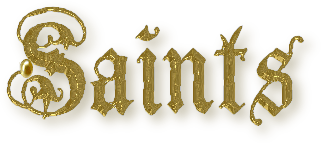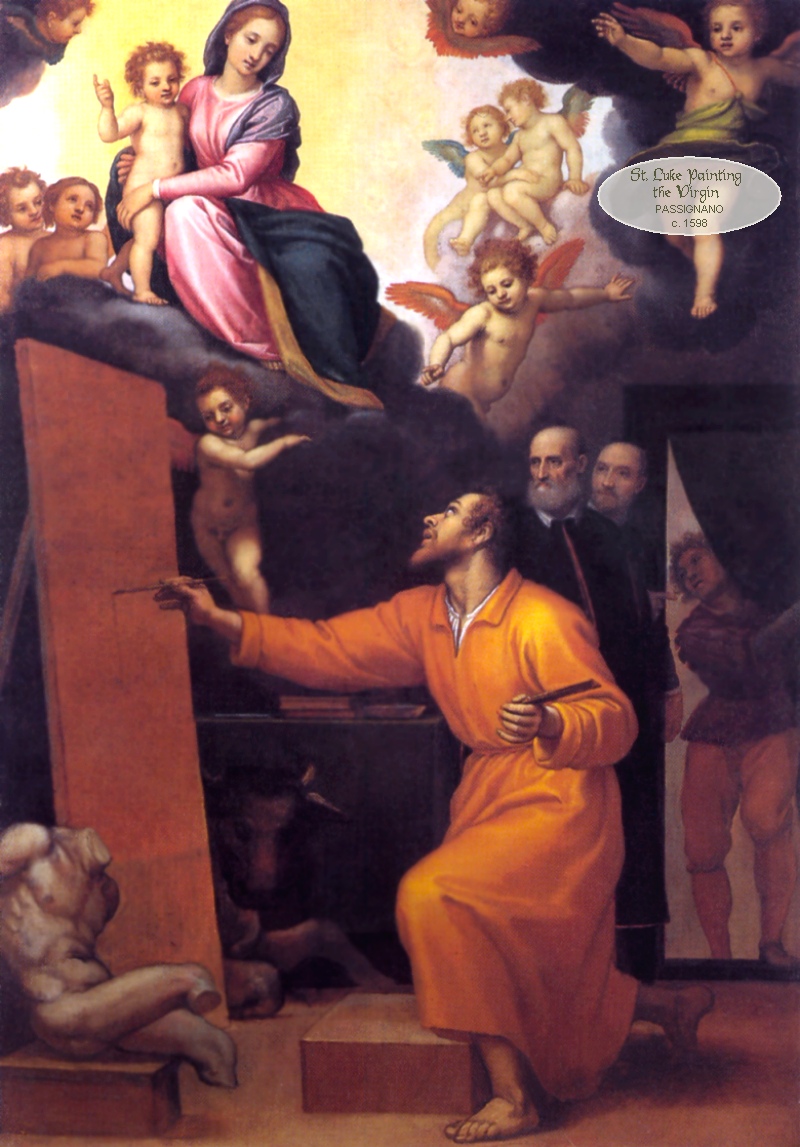   St. Luke the Evangelist October 18 It is from St. Paul himself that we learn that St. Luke was a Gentile, for he is not named among those of his helpers whom Paul mentions as Jews [Col. 4:10-11]; that he was a fellow worker with the Apostle; and that he was a medical man, who doubtless had the care of Paul's much-tried health. But nowhere does St. Paul refer to Luke's writings. The first time in the history of the mission of St. Paul that Luke speaks in his own name in the first person is when the Apostle sailed from Troas into Macedonia [Acts 16:10]. Before this he had doubtless been for some time a disciple of St. Paul. According to Eusebius, Luke's home was at Antioch, and he was almost certainly a Greek; and his journeyings and tribulations with St. Paul are, of course, set out by Luke himself in the Acts of the Apostles. It is only in the Gospel of St. Luke that we have a full account of the Annunciation of the mystery of the Incarnation to the Blessed Virgin, of her visit to St. Elizabeth, and of the journeys to Jerusalem (9:51; 19:28). He relates six miracles and eighteen parables not mentioned in the other Gospels. He wrote the book called the Acts of the Apostles as an appendix to his Gospel, to prevent false relations by leaving an authentic account of the wonderful works of God in planting His Church and of some of the miracles by which He confirmed it. Having related some general transactions of the principal Apostles in the first establishment of the Church, beginning at our Lord's ascension, he from the thirteenth chapter almost confines himself to the actions and miracles of St. Paul, to most of which he had been privy and an eye-witness. Luke was with St. Paul in his last days: after writing those famous words to Timothy, "The time of my dissolution is at hand. I have fought a good fight: I have finished my course: I have kept the faith.", the Apostle goes on to say, "Only Luke is with me." Of what happened to St. Luke after St. Paul's Martyrdom we have no certain knowledge. But according to a fairly early and widespread tradition he was unmarried, wrote his Gospel in Greece, and died at the age of 84 in Boeotia. As well as of physicians and surgeons, St. Luke is the patron Saint of painters of pictures. A writer of the earlier sixth century states that the Empress Eudokia had a century before sent to St. Pulcheria from Jerusalem an icon of our Lady painted by St. Luke. Other pictures were afterwards attributed to him; but St. Augustine states clearly that nothing was known about the bodily appearance of the Virgin Mary. On the other hand there can be no question of the many subjects suggested to so many artists by St. Luke's descriptions of events in his writings. In accommodating the four symbolical representations mentioned in Ezekiel to the four evangelists, the ox or calf was assigned to Luke; St. Irenaeus explains this by reference to the sacrificial element in the beginning of his Gospel. VIEW ANOTHER MASTERPIECE    HOME---------------PRAYERS AND DEVOTIONS-----------------LITANIES www.catholictradition.org/Saints/saints10-12.htm |